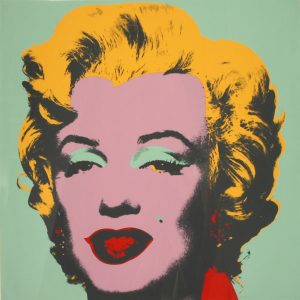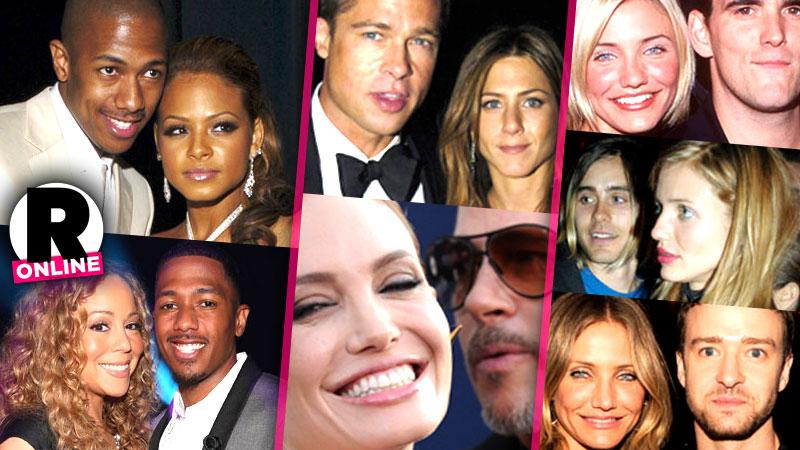
Robotics will become more advanced and more jobs can be automated. Robotics technology today can automate 25 per cent of jobs. But, we still depend on humans to program them. For unforeseen situations, humans will still be required. However, the robots' increasing capabilities may eventually lead to some jobs being eliminated. The advantages of robots will be discussed in the following article. We'll be focusing on general-purpose autonomous robots as well as teleoperated robotics.
Cost and complexity
There are two main types of robot systems. The first uses vacuum grippers and an air supply to pick up items and place them. Although the second type doesn't require an air supply or compressor it will need a control system to open valves, activate servos and sense objects' position. These systems can be controlled using embedded computers or programmable controllers (PLCs).

Applications
Robotics applications are widespread, from manufacturing to medical research. Machines and robots were invented by man for many purposes throughout history, including entertainment and religious functions. Early Greeks built hydraulic statues that could impact temples. Others made mechanical robots for fun. The Industrial Revolution brought us the first computers. Now, robots are being used in almost every industry, from factory automation to deep-sea travel.
General-purpose autonomous robots
General-purpose Autonomous Robots are generally machines that operate autonomously from human operators. They are typically designed to carry out tasks in open settings without any human supervision. They use sensors that detect the environment around them and use decision-making mechanisms to decide which course of action to take. Roomba vacuum is a great example of GAAR. It uses sensors that allow the vacuum cleaner to roam freely.
Teleoperated robots
Teleoperation has many limitations. Human factors such as flexibility and shared understanding of the task are important. They also need to be able to communicate with each other. However, it is sometimes impossible to detect the full environment information ahead of time for high-quality tasks. Enhancing the perception abilities of teleoperated robots is one way to solve this problem. Teleoperation systems can now achieve security, synchronisation, and transparency thanks to these advances in perception. Teleoperation systems must ultimately overcome these obstacles while remaining compliant with human capabilities.

Dependent robots
A dependent robot can't move its own leg without instructions from its brain, which is unlike a human being. A neuro-robot that can program itself is able to do this. This technology was created in the 1990s, and it has since become a standard for prosthetic legs. In addition, it can be programmed to do many tasks that humans cannot do. This article will cover the benefits of using dependent robotics in manufacturing, as well as other applications.
FAQ
What is some pop culture from 2020?
The music industry is changing rapidly, and this year we saw artists such as Billie Eilish, Post Malone, and Travis Scott all reach number 1 on Billboard's Hot 100 chart. This was an incredible feat for any artist.
This is also true for streaming services. Spotify reported streaming over 10 million hours of audio last year. This is five times more than what Spotify users listened to just five years back!
This has led to a massive shift in how people consume media. People now spend most of their time-consuming content rather than creating it.
All age groups have easy access to high-quality audio content. This means that anyone can record, edit, mix, and release their music.
You don't have to go to school to learn classical instrumentation in order to play your favorite songs. Download an app, add your voice, then upload them to YouTube.
If you don't feel like making music, why not just watch? You can find countless channels that make videos of songs, from parodies to covers.
What is popular music culture?
Popular Music Culture is a constantly-changing phenomenon that comes in many forms.
Popular music culture is defined by its use of certain styles of music (e.g., rock, jazz) and lyrics. It also covers the influence of visual media like film, television, fashion advertising, and so on, on artists' careers as well as public perception.
It's also about the way fans interact with their favorite artists.
A key element of popular music culture are the "superstars", which are musicians who have achieved fame or fortune.
These superstars often transcend genres and become cultural icons, and their popularity has influenced the evolution of popular music itself.
Other aspects of popular music culture include:
* The rise recording technology – from acoustic instruments up to electric guitarists and microphones.
* Invention of the record player and radio
* The birth of rock 'n roll.
* The introductions of film and television;
* The birth of MTV/VH1;
* The creation of the internet.
What is pop media?
Pop culture is all around. It's everywhere we go: TV, radio, film, music, magazines, newspapers, websites, social networks, etc. It surrounds us all day. It influences everything from our clothes, food, music, language, politics, and religion. What is pop culture exactly? Wikipedia states, "Popular Culture (or Popular Culture) is the mass production of ideas and products for mass consumption." This term is often used to refer to TV shows, movies and music. Pop culture goes beyond entertainment. This term refers to anything consumed by the masses such as video games and sports, toys or clothing, fast food, political campaigns and many other things.
How did pop culture develop?
The development of popular culture was driven by technology. It developed as people became increasingly mobile. Mass communication was made possible by the invention of radio. This allowed for the rise of television and the birth of the internet.
Computers became popular at home when people were introduced to computer games. These games were played with consoles such the Sony Playstation 3 and Nintendo Wii. They are now becoming available for free online. Many young people now prefer video games to watching television.
Video games are very common among children and teens. You can play alone or with other people via the internet. Call Of Duty or Grand Theft Auto can be very violent. Parents worry about their children's safety while playing these games. Others find it interesting to see what happens if a character dies.
Music videos are another way youth can be influenced by pop culture. They offer information on current celebrities and trends. They are loved by young people. It's obvious that music is a major part of our lives.
Many artists use special effects in music videos to enhance their songs. For example, rappers wear wigs and makeup to look more attractive. Others put themselves through extreme physical demands to show off their bodies. Many singers are able to sing while wearing costumes.
Today, there's so much choice in music. You can find any type of music that you desire. But this isn't always good news. Music can sometimes encourage violence. People are often angry when they hear certain songs or words. Sometimes they even commit crimes.
50 Cent recently experienced this. One line in his song Get Rich Or Die Trying says: "I'm going after a motherfucker / But I don't know how, but I might." This song was thought to mean that he would murder someone. A man called him up and threatened him. 50 Cent changed the lyrics. It now says, "I'll shoot one bitch down/ I don’t know why, but I just might."
Popular culture is essential. We need to be able to see how it affects our lives. If we don’t understand how it affects us, we won’t be able prevent its harmful effects.
What is the origin of pop music?
It was an accident. The mistake that caused the first song to be written was when someone accidentally knocked a piano over while playing on New Years Eve 1920.
The recording company loved what they heard so they decided to release the single.
This single was the first to be officially recorded.
Pop music has been the most loved form of musical entertainment since then.
Who came up with the term Pop Music?
Invented by Frank Zappa. He used the word pop music to describe his style of music.
He stated that he wanted to create music that appealed to everyone. He called his music "pop music".
Zappa also invented the phrase "You Know It's Pop when ..."", which signifies that something is popular if there are many people who enjoy it. For example, Michael Jackson's Thriller album is one of the best-selling albums ever.
Zappa's definitions are very different to the present definition of pop music. Today, pop music includes all types of music. But back then, only certain kinds of music were considered pop.
What are examples of pop culture today?
Pop Culture is the art of the 21st Century. It encompasses all forms of popular entertainment, from music, film, TV, video games, fashion, advertising, comics, etc. Author Neil Postman coined the term in his book Amusing Ourselves To Death (1985). Pop refers to mass communication that uses formulaic and cheap tricks to create an illusion or spontaneity.
However, he said that most people don’t enjoy true enjoyment because their culture has conditioned them to want media experiences that make it seem superior to others. He also argued that cultural expression has contributed to the decline in critical thinking skills among young adults.
Pop culture is also known as consumerism or popular culture.
Statistics
- According to Kathryn Sorrells (2013, pp. 142-144), there are several ways that we can become informed consumers of popular culture. (socialsci.libretexts.org)
- Latinos represent roughly 19% of the U.S. population. (npr.org)
- For example, the term hater meaning someone who strongly undermines or criticizes others, often due to pathetic jealousy, likely emerged from hip hop culture, such as the term playa hateras, used by influential rapper Biggie Smalls as early as 1995. (simplicable.com)
- Yet a Nielsen study shows they account for 42% of the country's most-watched content on streaming services. courtesy Nielsen (npr.org)
- According to Dictionary.com, popular culture, or low culture as it is sometimes referred to is comprised of the “cultural activities or commercial products reflecting, suited to, or aimed at the tastes of the general masses of people” (7/21/19). (socialsci.libretexts.org)
External Links
How To
What are some pop culture icons?
Americans were obsessed with space travel in the 1960s. Star Trek was the most popular TV series at that time.
From 1966-1969, the original series aired exclusively on NBC. It featured William Shatner in Captain Kirk, Leonard Nimoy in Mr. Spock, DeForest Kelley playing Dr. McCoy and James Doohan playing Scotty. Majel Bart Roddenberry played Uhura. Nichelle Nichols played Lieutenant Nyota Uhura. Walter Koenig portrayed Pavel Chekov. Grace Lee Whitney acted as Yeoman Janice Rand. (Wikipedia)
In 1967, the series was the subject of the first feature-length film. Paramount Pictures released the film, titled "Star Trek." Robert Wise helmed the movie. (Wikipedia)
In 1968, the second season started airing on television. This season featured the crew travelling back in time to 1969. (Wikipedia)
The television series' third season began airing in 1971. This season introduced a new character named Commander Richard A. Morn. He was a Starfleet officer who had been born on Earth in 2063. (Wikipedia)
"Star Trek: Planet of the Apes", a live action spinoff was also available during this time. It aired on the air between 1972 and 1974. (Wikipedia)
The television series premiered its fourth season in 1973. The fourth season featured two new characters, Ensign Ro Laren (Lt. Ilia) and Ensign Ro Laren (Ensign Ro Laren). Marina Sirtis played both of them. (Wikipedia)
The fifth season premiered in 1975. It was the last season to air before the franchise went into hiatus. (Wikipedia)
After the television series was cancelled, numerous attempts were made at its revival. One of these was a 1977 pilot episode titled "Where No Man Has Gone Before," but it failed to find a partner network or studio. (Wikipedia)
Star Trek: New Voyages is an animated series that aired in 1998. It aired only 13 episodes. (Wikipedia).
After a seven-year hiatus, the sixth season of the TV series was returned in 2009. It was called "Enterprise". It ran for five seasons until 2013. (Wikipedia)
There were also three feature films produced during this era. The first was released in 1979. It was called Star Trek: The Motion Picture. Nicholas Meyer directed it. It featured William Shatner (starring James Doohan), Leonard Nimoy. Walter Koenig. Majel Bart Roddy and Ricardo Montalban. (Wikipedia)
The following two movies were released respectively in 1982 and 1987. They were "Star Trek II - The Wrath of Khan", and "Star Trek III - The Search For Spock". Nicholas Meyer directed them both. (Wikipedia)
In 2001, the seventh season of the television series aired. It was entitled "Encounter at Farpoint". It was the first episode of the show's history without guest stars. (Wikipedia)
2005 was the last episode of the television series. It was titled "All Good Things ...".." Ronald D. Moore wrote it. It was directed by David Livingston. (Wikipedia.)
In 2008, a brand new Star Trek TV show premiered. It was called "Trek Nation". It's currently being aired by CBS. (Wikipedia). "Trek Nation," a show about people from all walks of life, is about how they come together to create their own version of the United Federation of Planets. Their goal is to help other planets achieve peace with each other. (Wikipedia). "Trek Nation", a fascinating concept, shows how different people can come together and make something positive. (YouTube Video)
You should read books on the timeline of Star Trek. Start with Gary Wolfe's book Star Trek Chronology. There are many more books available online.